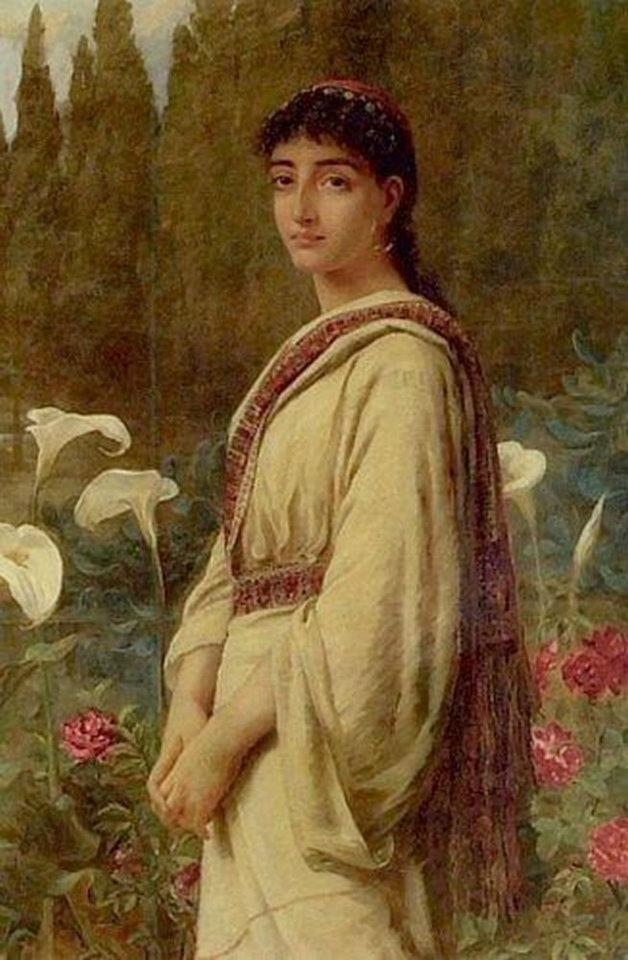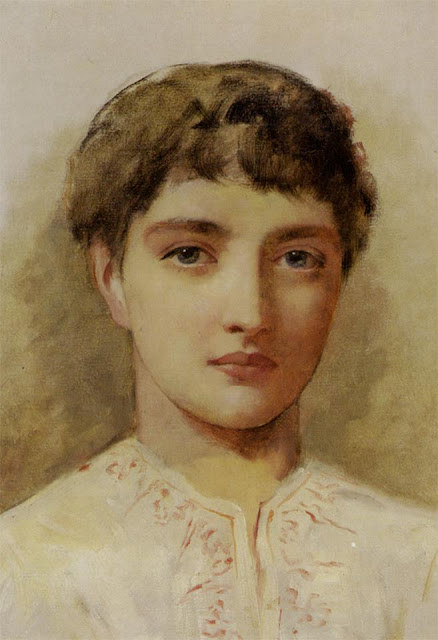EDWIN LONGSDEN LONG English (1829-1891
EDWIN LONGSDEN LONG (1829-1891), painter and Royal Academician, born at Bath on 12 July 1829, was the son of E. Long, an artist, of a family resident at Kelston in Somerset, and was educated at Dr. Viner's School in Bath. Adopting the profession of a painter, Long cam to London and studied in the British Museum. He was subsequently a pupil in the school ofJames Mathews Leigh [q. v.] in Newman Street London, and practiced first as a portrait-painter; painting Charles Greville [q. v.], Lord Ebury, and others. making the acquaintance of John Phillip, R.A. [q. v.], he accompanied that artist to Spain, where they spent much time. Long was greatly influenced by the paintings of Velasquez and other Spanish masters, and his earlier pictures, such as 'La Posada' (1864), 'Lazarilla and the blind beggar' (1870), were painted under Spanish influence. His first important pictures were 'The Suppliants' (1872) and 'The Babylonian marriage market' (both subsequently purchased by Thomas Holloway). Long was soon thoroughly imbued with eastern archæology and mainly occupied himself in depicting oriental scenes like 'The Egyptian Feast' (1877), 'The Gods and their makers (1878), &c. He was elected an associate of the Royal Academy in 1876 and an academician in 1881. His pictures always attracted attention and his 'Diana and Christ' (1881) (now in the possession of Mr. Daniel Thwaites), greatly enhanced his reputation. His pictures suited the taste and appealed to the religious sentiment of a large portion of the public, and their popularity was increased by a wide circulation of engravings. He consequently determined to exhibit his next pictures in a separate gallery of his own in Bond Street, and there in 1883, and the following years, his 'Anno Domini' and 'Zeuxis at Crotona' met with great commercial success. He was engaged on some
characteristic pictures which he intended to add to his gallery, when he fell a victim to pneumonia resulting from influenza, and died at his residence, Kelston, Netherhall gardens, Hampstead, on 15 May 1891, in his sixty-second year. He was buried in West Hampstead cemetery. The will signed by him on the day of his death was the subject of a lawsuit, to which his relatives were parties, but the matter in dispute was amicably arranged (Times, 13 and 14 Dec. 1892). Besides the 'Edwin Long' Gallery in Old Bond Street, a number of his pictures was collected together after his death, and formed the nucleus of a gallery of Christian Art which replaced the works of Gustave Doré in the well-known gallery in new Bond Street. Long had considerable practice as a portrait painter but his success in that line was not conspicuous, although he obtained high patronage and very large prices. He painted for the Baroness Burdett Coutts (his chief patron) portraits of herself, her friend Mrs Brown, and Mr. Henry Irving. Among other portraits of his latter years were a memorial portrait of the Earl of Iddesleigh, of which he painted a weak replica for the National Portrait gallery, portraits of Cardinal Manning (perhaps his best effort in this line), Samuel Cousins, Sir Edmund Henderson and others. In his earlier works Long showed great power and thoroughly deserved his success and popularity. His later works were in no way worthy of the same admiration; they suffered from a continual repetition of types which resulted in monotony. He married a daughter of Dr. William Aiton, by whom he left a family, of whom a son, Maurice Long, was killed in a railway accident at Burgos in Spain on 23 Sep. 1892. [Hampstead express, 18 Jan 1890, 16 May 1891; Daily Graphic, 16 and 18 May 1891; Athenæum, 23 May 1891; Scotsman, 16 May 1891







































































Tidak ada komentar:
Posting Komentar